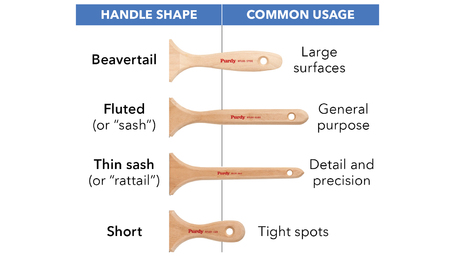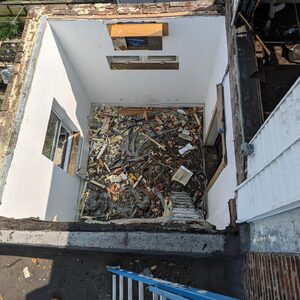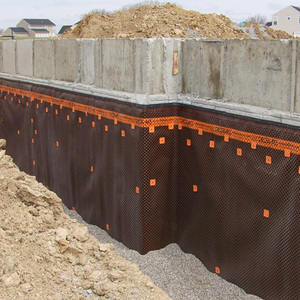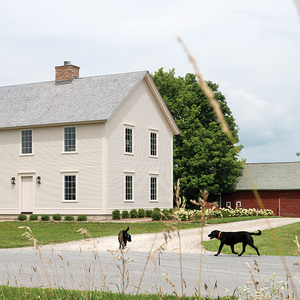Attic – add vapour barrier or not?
We have a 1939 2 storey home in Toronto. Now in the process of replacing the very very last few lengths of knob ‘n tube wiring. Nice thick blanket of cellulose in attic. Have been shovelling under it to get at wiring. Nice time of year to be up there – yuck.
There is no vapour barrier in the attic. Should we temporarily shovel up the insulation (carefully) add VB and replace the insulation? It’s feasible to do this, IF it’s the right thing to do. But we have heard advice to do it and not to do it from knowledgeable DIYers and, more importantly, pro contractors we are lucky enough to count among our friends. If BTers are bored, I’d love to hear you weigh in.
The YES side says, that’s just how you’re supposed to insulate an attic. The NOs say that so long as you seal up around intrusions through the nice, tough, double-layered cement-board ceilings, and have an adequate amount of insulation, you would be better off without VP – to let small and unavoidable amounts of moisture wick and evaporate.
Other facts of interest: Roof has several vents. Intrusions through the ceiling are sealed and insulated. Not terrific ventilation at soffits, but I think overall, we’re okay for airflow. What say you?



















Replies
Vapor barrier should be applied next to the drywall (between ceiling and joists). However, this will be impossible unless you removed all the ceiling material. Your better off to just insulate it well as you can....Also, there are several Vapor barrier PAINTS on the market that will act as a partial V/B.. A couple of coats will certainly help. This way ,you get to paint/ redcorate all the ceilings too. Hube
Edited 7/12/2004 8:13 am ET by Hube
I vote no.
What you want is to seal all of the protrusions through the attic plane. IMHO, most moisture problems in attic come from (moisture laden) air leaks, not vapor that permeates through solid wall materials.
Plus, what a hassle it would be to install on the topside...
Nice time of year to be up there - yuck
I was tempted to say I'd trade you, until I checked the stats:
Toronto: 27° C; heat index 35°; 66% RH
Bryan: 30° C; heat index 33°; 61% RH
Now, the remote thermometer in my attic was up to 107° on Saturday (around 42° C)--so maybe 30° of lattitude does make a difference . . .
Thanks for replies and sorry to not have said so right away.
The NOs have it !
In a house of that age, if the ceilings are original, they will have several coats of oil paint. That makes a pretty good vapor barrier. Rather than adding another barrier, you should put your effort into closing off any "penetrations" -- areas around light fixtures, the areas at the edges of walls, places where pipes come through, etc.
One way to handle wall edges is to pour something like roof coating along the edges -- something pourable but thick and glopy that will conform to all the cracks and crannies. (Plug gaps larger than about 1/4" with something first.)
Ceiling light fixtures are a problem that I've never found a good solution for. You can try to foam them with "Great Stuff", but that's kind of hit and miss. Usually the wires coming out, and the fact that they are generally right adjacent to a joist makes putting any sort of box around them difficult. Probably what would be ideal would be something along the lines of a thin sheet of modeling clay that you could form around the box, but I've never seen anything like that (though I suppose you could run electrician's putty through a pasta press).
You've obviously done this before {g}. Having come to the conclusion we could avoid a full new VB, we've been puzzling how to seal up intrusions through the ceiling and, yup, ceiling fixtures are the only real headache - so you are right on cue.
We can attach new boxes (bigger, cleaner, with ground screw) to the existing joist to joist mounting rods, so no major ceiling repairs. Taking a cue from other threads on the subject of lights and such in insulated ceilings, people have said, 'if you can't find the box you need then build it yourself (e.g., from galvanized sheet metal) and seal that well.' We bodged together two satisfactory sealed boxes from HD parts, but I'd rather start over with something nice and tidy. We're in no hurry, so maybe it'll be cool weather by the time we post photos of my handywork for BT ridicule. Maybe someone will show me their designs first (or link to their supplier).
You can buy IC certified fixtures if replacing.
In a discussion that turned to how to seal up electrical boxes ifrom the top down in a cellulose-filled ceiling - when simply swapping them out for ones designed for insulated ceilings won't be easy - you said..
" ....something along the lines of a thin sheet of modeling clay that you could form around the box, but I've never seen anything like that (though I suppose you could run electrician's putty through a pasta press). "
Though I suspect you weren't being literal about the pasta press, it stuck in my mind. So, today I used a wine bottle rolling pin and two sheets of plastic to create a pastry-thick slab of electrical joint compound. I used these pancakes to completely encase two of the mounted ceiling fixture boxes as an experiment. The edges of compound run right into a new, reinforcing curb of drywall compound around the edge of the box. I also plan to overdrape the box with a small section of heavy plastic vapour barrier - with ends secured to joist and sides rolled onto firring strips. AND a square of fiberglass bat before the cellulose gets shovelled over. Now THAT should keep cellulose out of the box. And the mess is certain to bemuse the next person to view it (which we hope will be decades from now).
Actually, I was serious about the pasta press. Crafts people use them a lot for clay and such.
My two cents worth is that you were up in the attic and the insulation seemed dry and you saw no evidence of moisture problesm from condensation? (Guess you'd see this better in winter.) But if there are no problems with vapor now, maybe it's okay. And the thick blanket of cellulose should absorb, wick and disperse moisture to the vented attic.
You may find this site interesting.
http://www.buildingscience.com/whatsnew.htm
Most States, Provinces, Governments and even power companies have good info on the questions you have asked. Cathedral ceilings are often specifically addressed. R-38 is a minimum standard today. R-48 in attics.